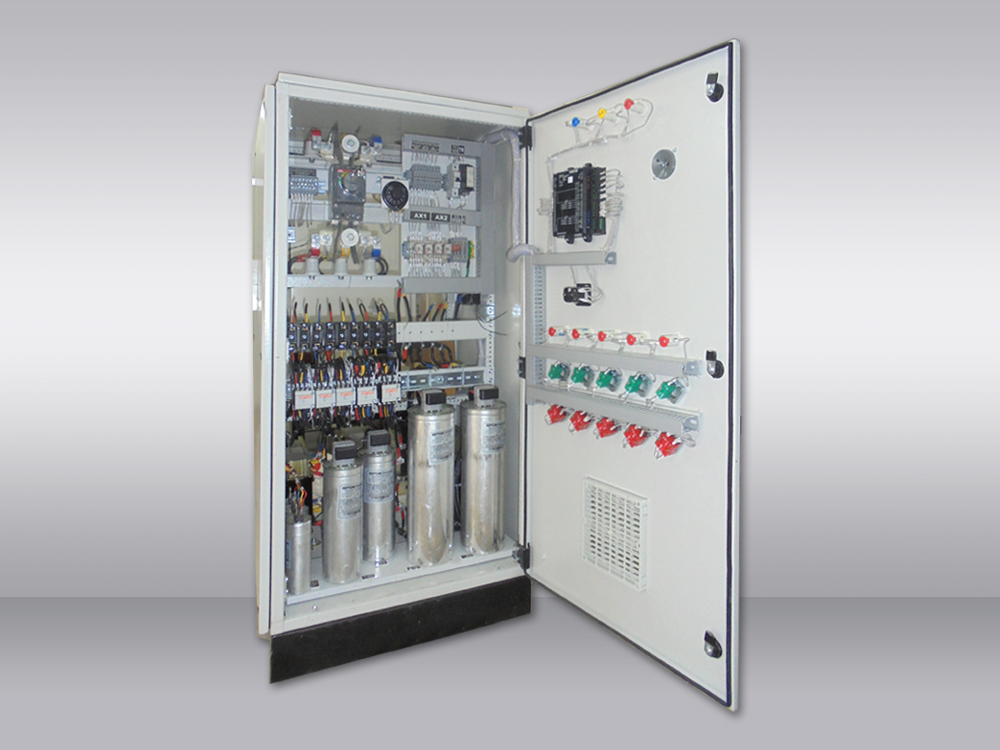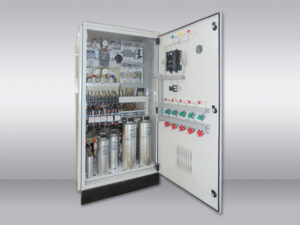How to Choose the Best AC Drive Supplier for Your Needs?
In this digital era of the industrial landscape, the one essential thing is this AC drive, also known as variable...
Read More

APFC means Automated Power Factor Correction. They are electricity-regulating panels intended for monitoring, adjusting, and managing the power factor of electrical systems. APFC panels are crucial for ensuring that power quality and energy efficiency are high in various industrial and commercial settings. These panels monitor and regulate the power factor to maintain it optimally. Motors, transformers, and fluorescent lighting are frequently employed in industrial and commercial environments. The functionality and benefits of APFC panels will be discussed in this article.
Understanding Power Factor
When the power factor is 1, it means that electrical power is being used to the fullest. However, if the power factor is less than 1, it means that reactive power is being consumed, which can cause inefficiencies. KVAr denotes reactive power and is used by inductive or capacitive loads in the circuit. Electric motors and transformers are examples of inductive loads that draw lagging currents, which causes a low power factor. The reactive power doesn’t help in doing useful work, but it stresses the power distribution network. This causes more losses and less efficiency.
The Role of APFC Panels
APFC Panels are Important in controlling power by monitoring and regulating reactive power in electrical systems. This is accomplished through their oversight and regulation responsibilities. These panels make use of sophisticated control algorithms and components in order to maintain a power factor that is as near to one as is practically practicable.
The Functionality of APFC Panels:
1. Power Factor Monitoring: The APFC panels have the ability to monitor the power factor of the electrical system continuously. Students use dedicated sensors or analyzers to measure the power factor in real time. The monitoring gives essential information about the power factor status, so the panel can make changes if necessary.
2. Reactive Power Compensation: When the power factor goes below the desired level, the APFC panel adjusts to compensate for the reactive power. This is called Reactive Power Compensation. It does this by automatically controlling and adjusting the connection of the electrical system’s power factor correction capacitors and reactors. When we want to compensate for lagging reactive power, we connect capacitors in parallel. On the other hand, when we want to compensate for leading reactive power, we connect reactors in series.
3. Automatic Control: APFC panels have automatic control mechanisms that react to changes in the power factor. They keep analysing the power factor data and adjust the compensation equipment as needed. The dynamic control ensures that the power factor stays constantly optimised, reducing reactive power usage and increasing energy efficiency.
The Advantages of APFC Panels
1. Improved Power Quality: APFC panels improve power quality by keeping a high power factor. Voltage drops are reduced, voltage levels are stabilised, and voltage fluctuations are minimised. This results in better and more effective functioning of electrical devices, avoiding problems such as motor overheating and malfunctioning of voltage-sensitive equipment.
2. Energy Efficiency: APFC panels save energy by reducing the reactive power used. Reducing reactive power helps the electrical system work better, which means less energy is wasted, and it’s more efficient. This method helps save energy, reduces electricity bills, and is better for the environment. Power factor correction helps to improve the capacity of the electrical system.
3. Increased System Capacity: APFC panels can increase the amount of useful power by reducing the need for reactive power. This allows you to connect to more things without overloading the system. It saves money and resources by not needing infrastructure upgrades. Following power factor regulations is necessary for several countries. Rules are there to make sure that the power is good enough.
4. Following the Rules: The APFC panel aids us in adhering to the rules, enabling us to avoid any legal issues and financial penalties. By modifying the power factor in such a way, this method contributes to regulating the electrical system. It helps to guarantee that it will continue to function in the appropriate manner.
5. APFC panels assist electrical equipment in living longer because they improve power quality and reduce voltage fluctuations. This allows the equipment to be used for a longer period. Problems like early failures, voltage sags, and motor burnouts can be avoided if the voltage levels are maintained constantly. This can help you save money on repairs and reduce the time your equipment is inoperable, both of which are benefits you will reap from doing so.
To Sum Up-
Regarding electrical systems, opting for APFC panels is a shrewd decision because they may save money, guarantee that everything functions efficiently, and benefit the environment. Businesses and industries can conserve energy and better manage power factors with the assistance of APFC panels. We can boost power, conserve energy, extend the system, comply with laws, and increase equipment lifespan if we manage reactive power.
Aug 23
In this digital era of the industrial landscape, the one essential thing is this AC drive, also known as variable...
Read MoreJun 23
APFC means Automated Power Factor Correction. They are electricity-regulating panels intended for monitoring, adjusting, and managing the power factor of...
Read MoreJun 23
Programmable logic controllers (PLC) are widely used in industrial plants and factories to control motors, pumps, lights, breakers, fans, circuits,...
Read More